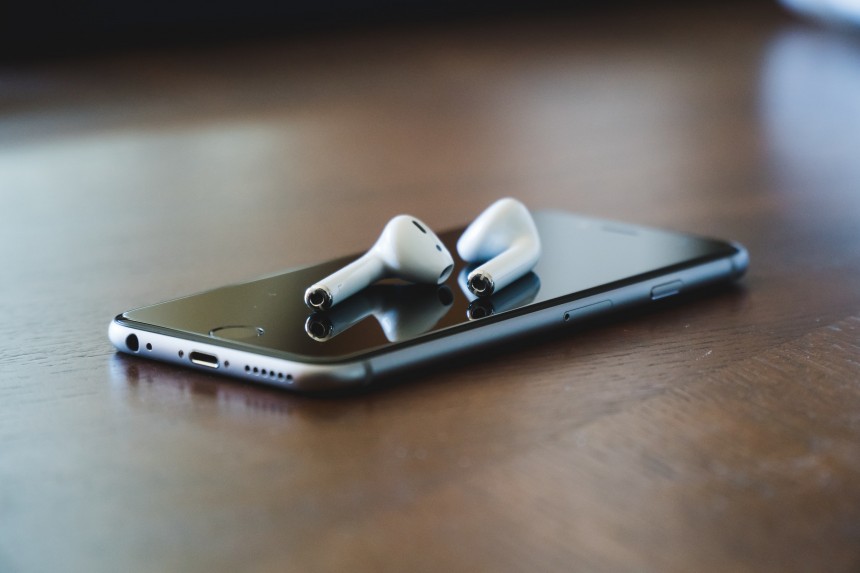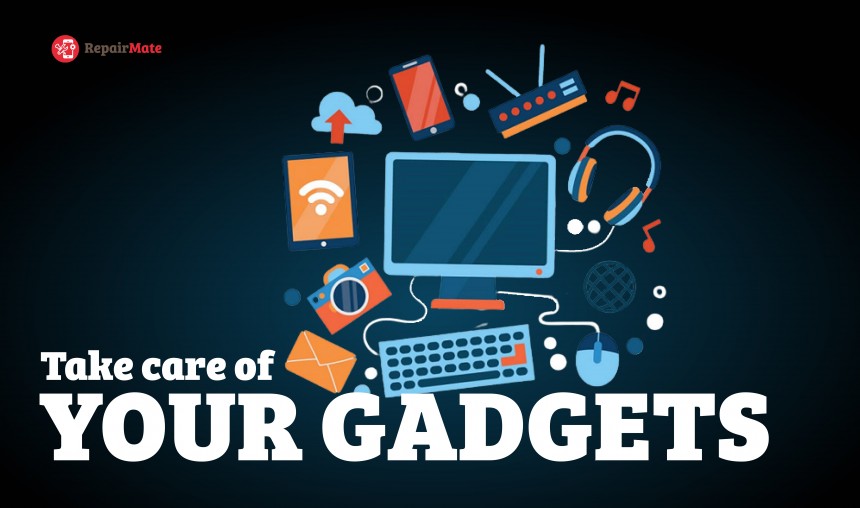How to Fix Common MacBook Issues?
Owning a MacBook is a privilege, but even these sophisticated devices can encounter issues that leave users frustrated. Whether you're experiencing slow performance, battery problems, or software glitches, this article will provide you with actionable solutions to the most common MacBook issues. In this guide, we'll delve into various problems and their troubleshooting steps, ensuring you can get back to enjoying your MacBook's seamless experience.
MacBook Running Slow: Identifying and Resolving Speed Issues
One of the most common issues MacBook users face is slow performance. This can be attributed to various factors, such as resource-intensive applications, startup items, and accumulated cache. To address this issue:
Checking Resource Usage: Open "Activity Monitor" from the "Applications" folder and monitor CPU, memory, disk, and network usage. Identify resource-hogging processes and consider closing or updating them.
Managing Startup Items: Go to "System Preferences" > "Users & Groups" > "Login Items." Remove unnecessary applications that launch at startup, which can contribute to slow performance.
Clearing Cache and Temporary Files: Use tools like "Onyx" or "CleanMyMac" to clear system and app caches. These files can accumulate over time and impact your MacBook's speed.
Also Read: How to Fix iPhone Battery Problems?
Fix Unresponsive Applications on Mac
Dealing with unresponsive applications can be frustrating, but there are steps you can take to resolve the issue:
Force Quitting Applications: Press "Option + Command + Esc" to open the Force Quit Applications window. Select the frozen app and click "Force Quit."
Updating or Reinstalling Problematic Apps: Outdated or corrupted applications can cause freezes. Update apps through the App Store, or if the issue persists, uninstall and reinstall the app.
Checking for System Updates: Ensure your macOS is up to date. Click the Apple menu > "System Preferences" > "Software Update" to install any pending updates.
Check Out: How to fix Apple Watch Pairing Issues
MacBook Overheating: Preventing MacBook from Running Hot
Overheating can lead to performance issues and potential hardware damage. Here's how to prevent it:
Cleaning Dust and Debris from Vents: Use compressed air to clean the vents and remove dust and debris that can obstruct airflow.
Using a Cooling Pad: Place your MacBook on a cooling pad to provide additional airflow and prevent excessive heat buildup.
Monitoring CPU Usage: Activity Monitor can also help identify processes that are causing high CPU usage and contributing to overheating. Close unnecessary applications consuming excessive resources.
Mac Wi-Fi Connectivity Issues: Ensuring Stable Wireless Connection
A stable Wi-Fi connection is crucial for most MacBook users. Follow these steps to address Wi-Fi problems:
Restarting Router and MacBook: Sometimes, a simple restart of both your router and MacBook can resolve connectivity issues.
Resetting Network Preferences: Go to "System Preferences" > "Network" > "Advanced" > "TCP/IP" > "Renew DHCP Lease."
Updating Wi-Fi Drivers: Check for Wi-Fi driver updates by going to "System Preferences" > "Software Update."
Keyboard and Trackpad Problems: Fixing Input Glitches
Keyboard and trackpad issues can hinder your productivity. Try these solutions to address them:
Testing External Keyboard/Trackpad: Connect an external keyboard or trackpad to check if the issue is hardware-related.
Resetting NVRAM/PRAM: Restart your MacBook and hold "Option + Command + P + R" until it restarts again. This can help with input-related problems.
Cleaning the Built-in Keyboard: Gently clean the keyboard with compressed air to remove debris that might be causing keys to stick.
Software Updates and Installation Failures: Troubleshooting Errors
Software update issues can lead to instability. To troubleshoot:
Checking Available Storage Space: Ensure you have sufficient free space on your MacBook for the update to install.
Restarting and Retry: Sometimes, a simple restart followed by a retry can resolve update failures.
Updating macOS via Recovery Mode: If the update still fails, boot into Recovery Mode (restart and hold "Command + R") and select "Reinstall macOS."
Spinning Beachball Cursor on Mac: Addressing System Delays
The spinning beachball cursor indicates system delays. Address it with these steps:
Closing Unresponsive Applications: Use "Force Quit" (mentioned earlier) to close unresponsive applications.
Running Disk Utility's First Aid: Go to "Applications" > "Utilities" > "Disk Utility," select your startup disk, and click "First Aid."
Upgrading to an SSD: Consider upgrading to a solid-state drive (SSD) for improved overall performance and reduced delays.
Check Out: Apple Watch Series 9 Leaks and Rumours
MacBook Noisy Fan: Quieting Down an Overactive Cooling System
A noisy fan can be annoying and indicate potential overheating. To quiet it down:
Resetting the System Management Controller (SMC): Shut down your MacBook, then press "Shift + Control + Option + Power" for 10 seconds. Release and turn your MacBook on.
Closing Background Processes: Use Activity Monitor to identify and close processes that are causing excessive CPU usage.
Addressing External Heat Sources: Keep your MacBook on a flat, hard surface to ensure proper airflow and minimise external heat sources.
Also Read: Phone Repairs | Fact Vs Myth
Mac Data Loss and Recovery: Safeguarding and Restoring Your Files
Data loss can be devastating, but you can minimise the risk:
Using Time Machine for Regular Backups: Connect an external drive and set up Time Machine for automatic backups.
Utilising Data Recovery Software: If you accidentally delete files, data recovery software like Disk Drill can help recover them.
Seeking Professional Data Recovery Services: In extreme cases, professional data recovery services may be necessary.
MacBook Screen Flickering and Distortion: Resolving Display Problems
Screen flickering or distortion can be caused by software or hardware issues:
Adjusting Refresh Rate and Resolution: Go to "System Preferences" > "Displays" and adjust the refresh rate and resolution settings.
Resetting the NVRAM/PRAM: As mentioned earlier, resetting these parameters can sometimes resolve display issues.
Verifying Display Preferences: Make sure the display preferences match your MacBook's capabilities.
Startup Issues: Troubleshooting MacBook Boot Problems
If your MacBook has trouble booting up, try these solutions:
Resetting NVRAM/PRAM: This step can often resolve startup problems.
Running Disk Utility's First Aid: If there are disk errors causing boot issues, Disk Utility's First Aid can help fix them.
Reinstalling macOS via Recovery Mode: As previously mentioned, using Recovery Mode can help reinstall macOS without losing data.
MacBook Bluetooth Connection Problems: Ensuring Seamless Pairing
Bluetooth issues can be frustrating, but they're solvable:
Restarting Bluetooth Devices: Turn off Bluetooth on both your MacBook and the connected device, then turn them back on.
Resetting Bluetooth Module: Go to "System Preferences" > "Bluetooth," hover over the problematic device, click the "X" next to it, and then reconnect.
Checking for Interference: Ensure there's no physical interference between your MacBook and the connected device.
Audio Malfunctions: Fixing Sound-related Glitches
When audio malfunctions, follow these steps to fix them:
Checking Sound Output Settings: Go to "System Preferences" > "Sound" and ensure the correct output device is selected.
Restarting Core Audio: Open "Activity Monitor," search for "core audio," and restart it.
Testing with External Speakers: If the issue persists, test audio using external speakers to determine if it's a hardware or software problem.
Security Concerns: Enhancing MacBook's Protection
Enhance your MacBook's security with these steps:
Keeping macOS Updated: Regularly install macOS updates to ensure you have the latest security patches.
Using Strong Passwords and Two-Factor Authentication: Protect your MacBook with strong, unique passwords and enable two-factor authentication for your Apple ID.
Installing Reliable Antivirus Software: While macOS is generally secure, installing reliable antivirus software adds an extra layer of protection.
In conclusion, owning a MacBook doesn't come without its challenges, but armed with the knowledge provided in this guide, you can effectively troubleshoot and fix common Mac issues that may arise. Remember that prevention is key—regular maintenance, updates, and cautious usage can significantly extend the life and performance of your MacBook.





